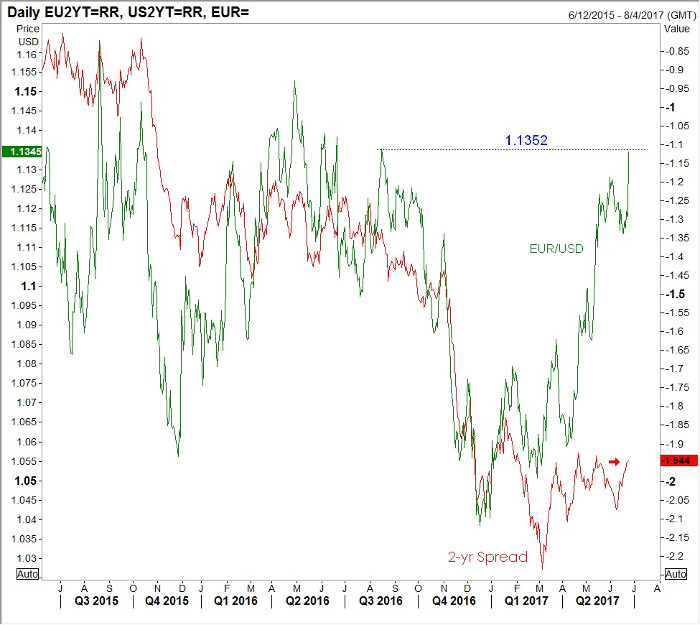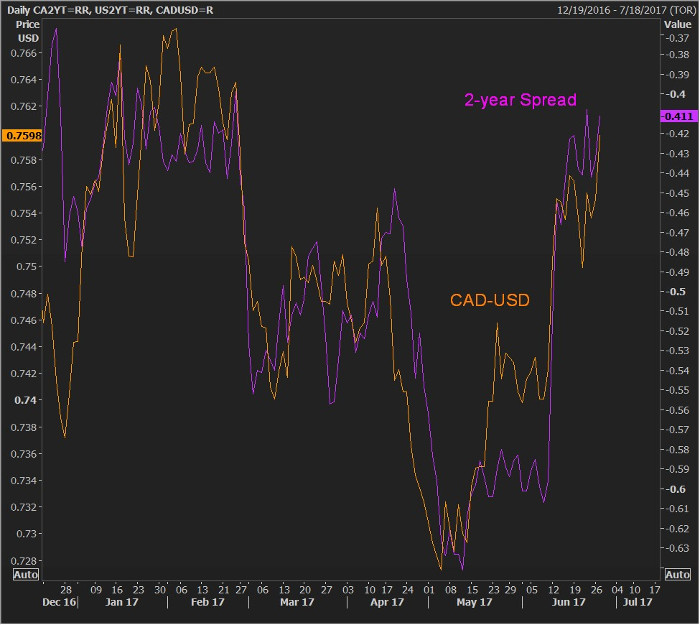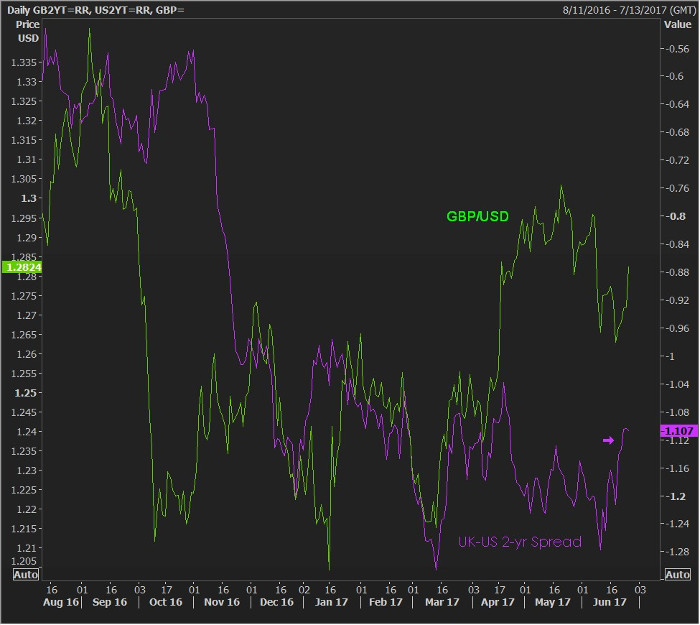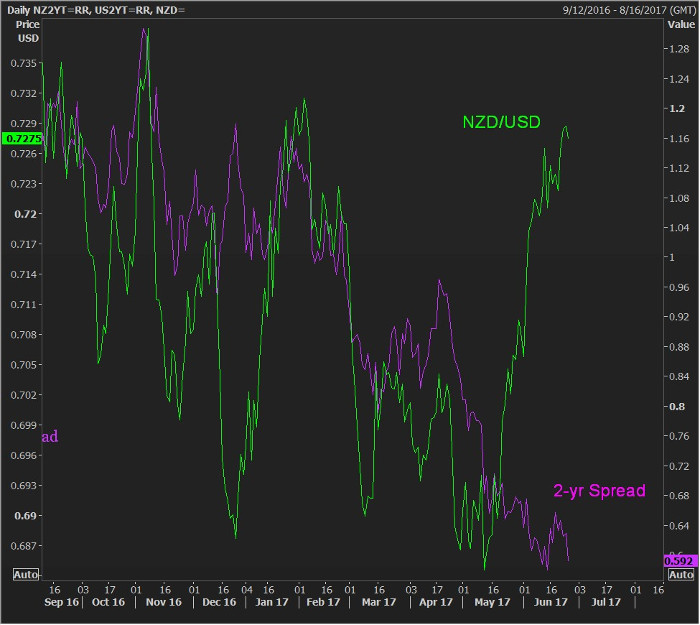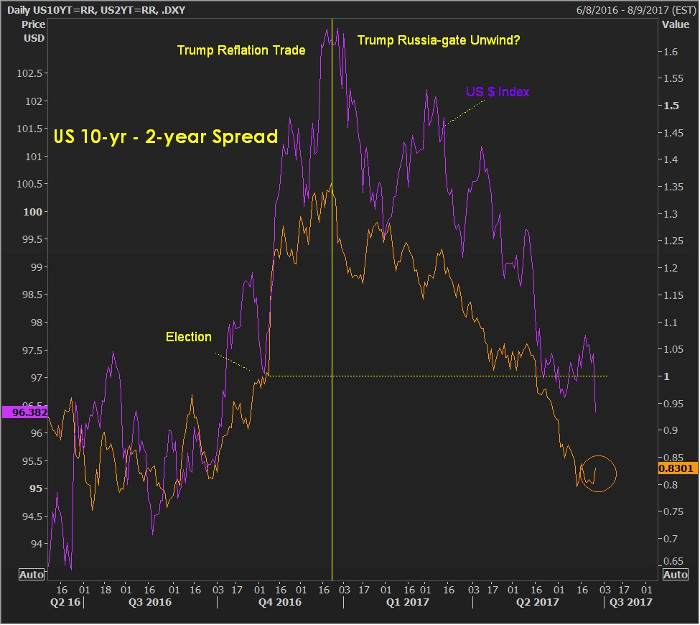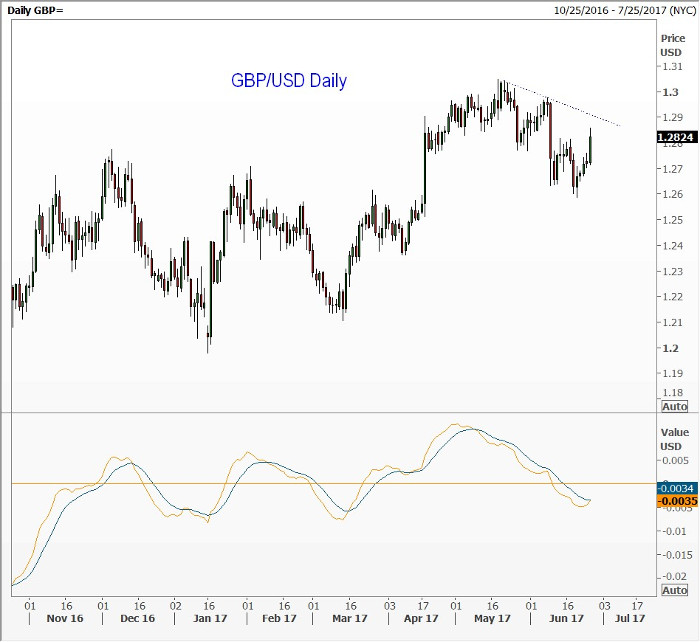We will be watching to see if Mr. Market decides to do a re-think when it comes to the UK-US yield spread. If it does, and the UK-US spread falls while the US 10 vs. 2 spread rises, the pound might be vulnerable again, asserts Jack Crooks of Black Swan Capital.
Quotable
“I sneezed and lost sight of the skylark.”
--Yayu (taken from Zen in the Markets)
Commentary & Analysis
US dollar getting hammered; the pound still an open question on the spread…
Surprise moves prices.
“Our success or failure will rest on our ability to anticipate prevailing expectations and not real-world developments.”
--George Soros.
Today (June 27), real-world developments in the form of an extremely surprising bullish speech from European Central Bank President Mario Draghi triggered prevailing expectations in a very positive way for the euro—it is soaring against the dollar.
The Eurozone-United States 2-year yield spread is sharply higher with the currency; i.e. the eurozone’s 2-year yields are rising sharply today, faster than US 2-year yields, as the players show their expectation the ECB will hike sooner rather than later thanks to Mr. Draghi’s talk.
The chart shows the price of EUR/USD versus the 2-year Spread…
Interestingly, the major currencies rising sharply today against the US dollar, including CAD and the British pound, are doing so on the back of rising 2-year spreads relative to the United States.
Canadian-USD versus 2-year spread:
GBP/USD versus 2-year Spread
And a currency trading lower is the one with a falling spread against the US—the New Zealand Dollar:
…ditto for the Japanese yen; it is weaker on a lower relative spread in Japan compared to the United States.
But what shouldn’t be lost here is the fact US rates rose sharply today. Below a chart benchmark us yields for 2’s/10’s/30’ (8-hour chart):
And the move in the long-end was greater than the short end; leading to a widening of the spread between US 10s vs 2s.
This is important, possibly for two reasons:
--The 10-2 spread is viewed as an important barometer for US growth; i.e. a falling spread indicates a slowdown; and a rising spread vice versa;
--and this spread has been highly correlated with the US dollar lately, as you can see in the chart on the next page.
The 10-2 spread (gold line) the US dollar index (purple line): Despite a rise in the spread here, the US dollar made a fresh new low.
So, despite the complete hammering of the dollar index, primarily because of the euro’s rally (it represents about 57% of the index value) just maybe the dollar isn’t quite done yet.
I think traders are right to more bullish expectations about both the ECB and Canadian central banks’ future rate view, as both economies have been putting in better than expected numbers. But the question remains wide open for the Bank of England.
Yields did rise today (June 27) in the UK, but the news wasn’t exactly stellar—the BOE wants banks to hold a greater capital buffer given the risks in the economy. This says the economy is not very strong and therefore likely rate hikes from the bank may be pushed out further than market players now expect.
So, despite being blown out of our short GBP/USD position, we will be watching to see if Mr. Market decides to do a re-think when it comes to the UK-US yield spread. If it does, and the UK-US spread falls while the US 10 vs. 2 spread rises, the pound might be vulnerable again.
View Currency Currents, commentary, and analysis at Black Swan Capital here…

